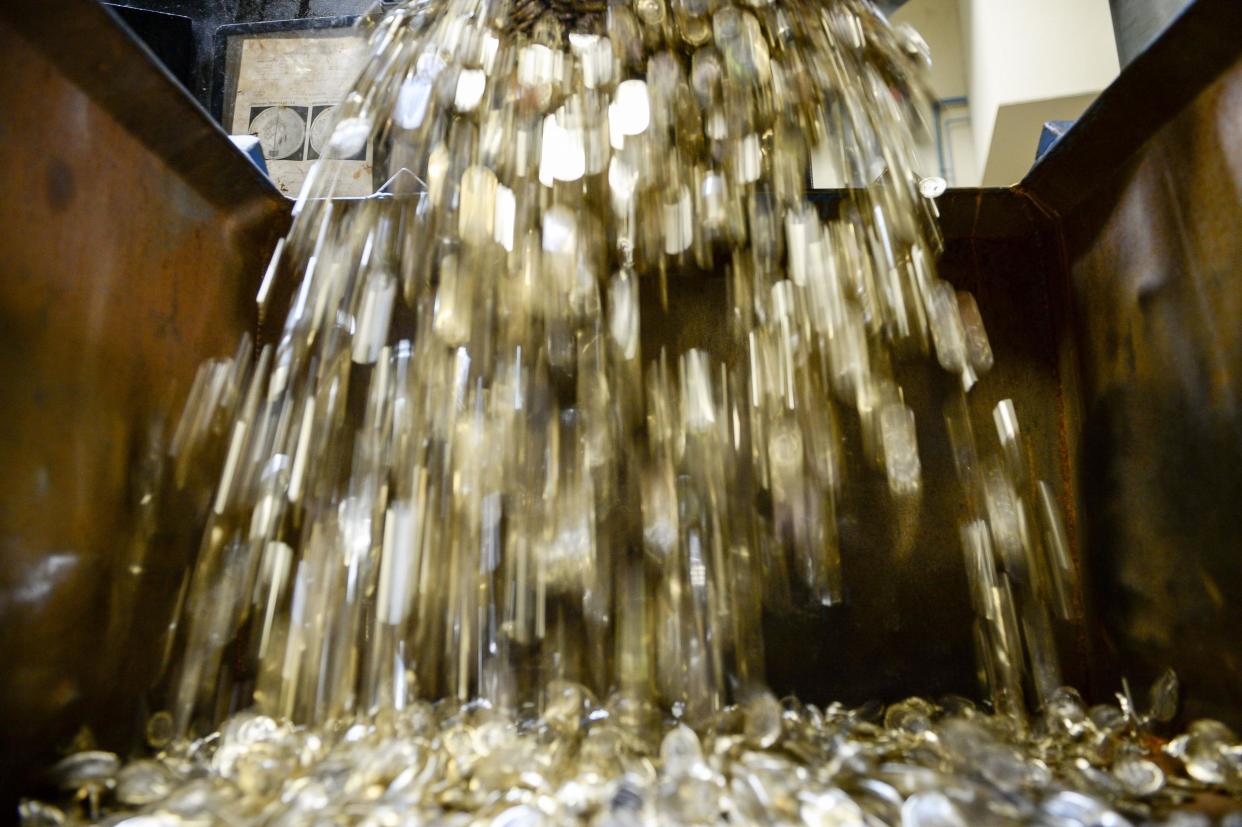Russell Lynch: Will huge bet against pound come unstuck?

Trillions of dollars’ worth of currencies slosh around the global currency market every day — and a record chunk of it is ranged against sterling.
The pound has been the black sheep of the world’s foreign-exchange markets since the Brexit vote. Everyone, from big institutions to hedge funds and downright speculators, is picking on sterling.
Market data from the Commodity Futures Trading Commission (CFTC), which captures leveraged trading, shows a net short position against sterling of 113,271 contracts — each a bet that the currency will fall. That’s the biggest punt against the pound for at least 20 years. Those contracts are traded on margin, meaning punters don’t have to put up the full amount, but each is worth £62,500.
That puts the total short bet against the pound on the CFTC market at around £7.1 billion, according to Oxford Economics. That might sound like a lot, but in fact it’s a fraction, a tiny snapshot at best; it doesn’t include the big money managers who don’t trade on margin, and it doesn’t include the options market.
The lion’s share of the currency trading market is done over the counter — with a call to the broker, rather than trading on an exchange. According to one market participant, the real size of the bet against the pound will run into tens — if not hundreds — of billions.
At first blush, who could blame them? Nine months on from the Brexit vote, the figures are pretty stark. As of today, the pound is down 18% against the dollar in the past nine months, and off nearly 13% on a trade-weighted basis. Sterling, at $1.24, is close to its bombed-out levels around the Conservative Party Conference last October, when the first real intimations of “hard Brexit” hit home.
But maybe the pound’s kicking has gone too far. Certainly, in the eyes of many watchers, $1.24 looks far too low for sterling, and many have nudged up their forecasts to between $1.30 and $1.35 by the year end.
The familiar narrative goes that consumer wallets will be hollowed out by inflation this year, although Bank of England figures this week show the death of the shopper exaggerated so far. Credit growth slowed a little in February, but it’s still growing by more than 10% year on year.
And a recent survey from Morgan Stanley showed consumers pretty unfussed about Brexit so far; there’s little sign of a “break”, and the sharp end of things is too far away as yet for them to worry about. Maybe that kind of devil-may-care attitude is why the UK’s resilience since the referendum caught practically every economist in the game off guard. The latest growth figures for the end of 2016, due out tomorrow, are likely to confirm solid-looking 0.7% quarterly growth.
Of course, Brexit negotiations will be tough; but if pragmatism does prevail and we actually manage to cut a deal something like our present arrangements, that’s another reason to buy sterling. The early conciliatory tone of yesterday’s exchanges between the EU and Theresa May is at least a positive.
BoE deputy governor Ben Broadbent, meanwhile, points out that the UK’s manufacturers are in a sweet spot — still in the EU even though we’re heading out it — so there are export upsides for growth as well as consumer downsides.
Further afield, Donald Trump’s Washington travails over Obamacare have also shaken faith — and the dollar — on his ability to deliver on tax cuts and big infrastructure spending. Over here, there are signs of a more hawkish bent from the monetary policy committee, where “some” members are thinking about “a more immediate reduction” in support of the economy.
The Bank isn’t expected to raise interest rates until the end of next year — but there’s scope for a surprise that simply wasn’t there nine months ago.
Maybe the currency market’s favourite whipping boy will have its day in the sun this year.

 Yahoo News
Yahoo News 
